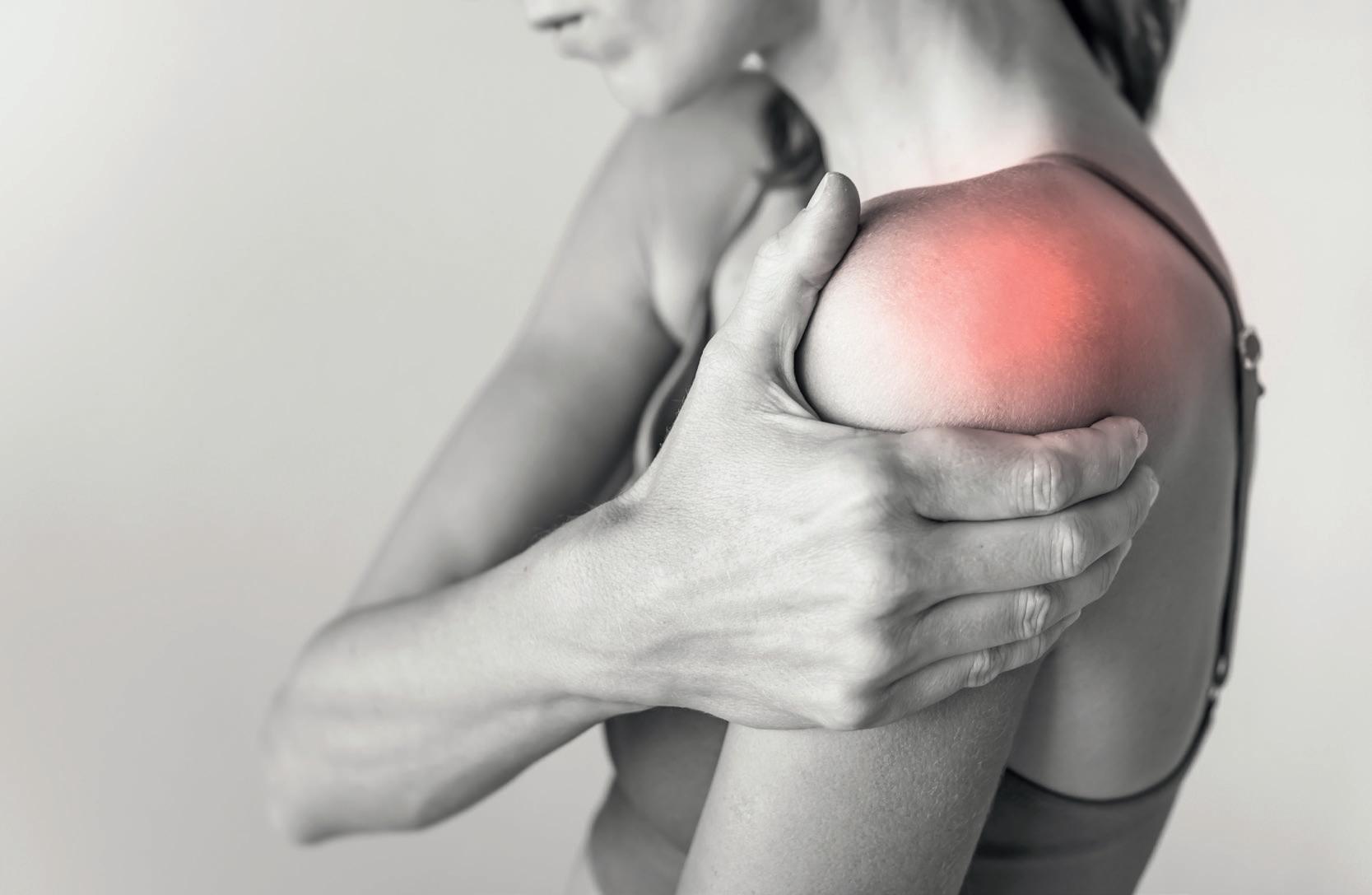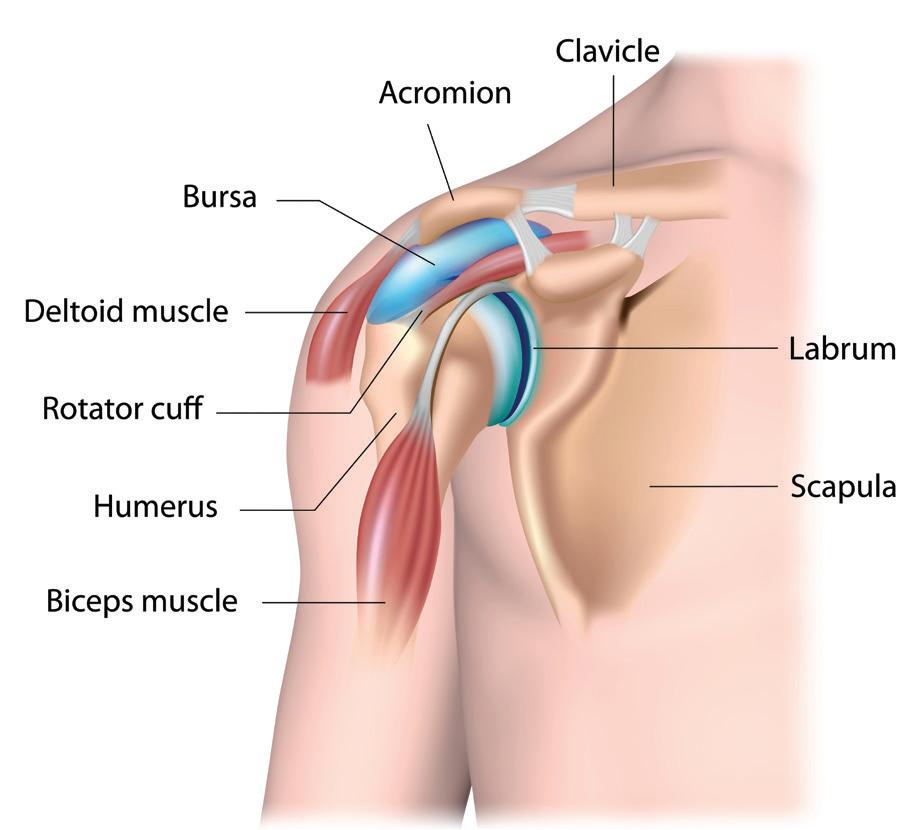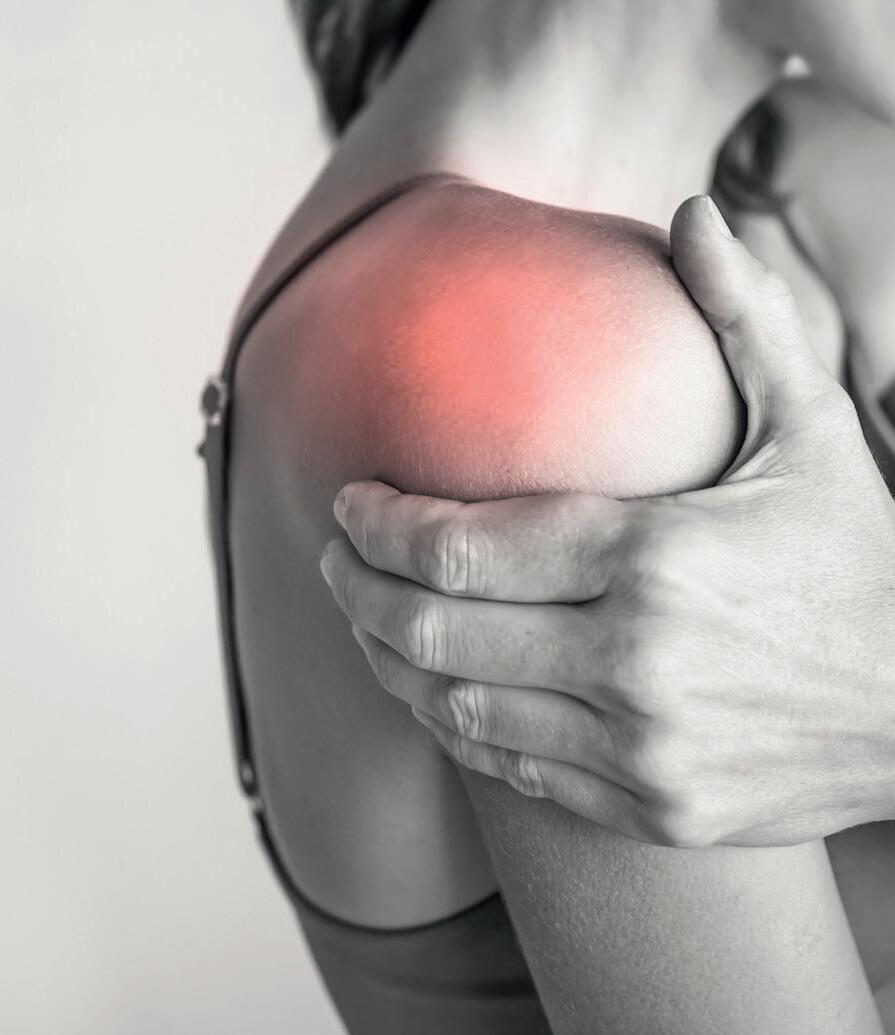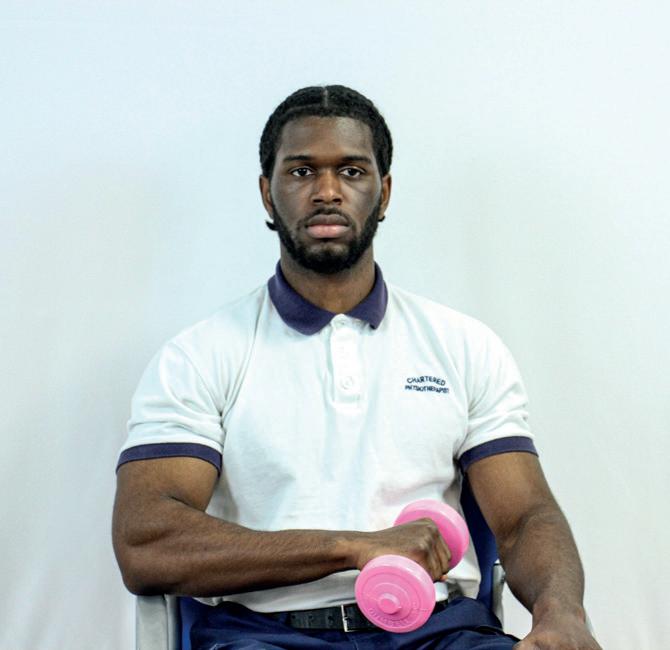Subacromial Shoulder Pain
Information, Exercises and Advice on How to Help Your Pain
Information
Subacromial Shoulder Pain is the most common form of shoulder pain experienced by adults. Pain is often experienced when lifting your arm away from your body, or by lying on your side in bed. The term Subacromial Shoulder Pain is an umbrella term that can include the tendons and bursa (a small fluid sac). You may be familiar with terms such as ‘bursitis’, ‘tendinitis’ and ‘impingement’, however your shoulder pain is often due to a combination of factors. Therefore, the term “Subacromial Shoulder Pain” is a more accurate way to describe several different issues that can contribute to your current shoulder pain.

Men and women are equally affected and approximately one in five adults will experience an element of shoulder pain at some point in their lives.
Diagnosis of your pain is often made by a thorough history and examination and can be done in person or online just as efficiently. The mainstay of treatment is advice, activity modification and progressive exercises. However, it may take between 6-12 weeks after starting an exercise programme before to you see a noticeable difference in your shoulder pain.
Rarely injections and surgery are needed.
What can cause subacromial shoulder pain?

There are many causes for rotator cuff related shoulder pain. Pain can often come on gradually with no clear injury. Other times pain can come on quickly especially if using your shoulder in a way it is not used to. Common causes can include doing more than normal (moving house, housework, cleaning windows or gardening), to even more simple normal age-related changes or simply your genetic makeup.

18683-PH-03
CONTINUED OVERLEAF providephysiotherapy.org.uk PAGE 1 [OF 4]
Subacromial Shoulder Pain
Self-help advice
If your job requires repetitive lifting, it can help to make simple adjustments at work such as taking short breaks or reducing the amount of the same movement.
Reduce any overhead activities or movements which aggravate your symptoms.
Try over the counter pain relief for a short while to help you to remain active and sleep well. Check with your pharmacist if you have any queries.
Most rotator cuff related shoulder pain will get better on its own within 6 months.
Further help
Your healthcare practitioner may recommend a steroid injection if they feel this will be of benefit. There are several pros and cons to a steroid injection for your shoulder. Therefore, if suitable your therapist will fully discuss all of these with you. Steroid injections are not often used as a first line treatment so your physio may want to explore other options first.
Surgery is very uncommon and is normally not needed. Symptoms can take a number of months to resolve, but this is normal and therefore it is important to be compliant with any advice provided to facilitate this recovery time frame.
Lifestyle factors
Lifestyle factors can influence your shoulder pain. These can include smoking, diabetes, being overweight and if you are going through hormonal changes such as the menopause. Sedentary behaviour and poor sleep can also negatively impact your pain. For this reason, your therapist may spend time discussing these factors with you during your session.


CONTINUED OVERLEAF
QR Links: Steroid Injection leaflet PAGE 2 [OF 4] providephysiotherapy.org.uk
Exercises and Advice on How to Help Your Pain
Information,
Subacromial Shoulder Pain
Exercises
Whilst there is no “one size fits all” approach when it comes to using exercises to help improve your shoulder pain. Exercises are often chosen to help with strength and control of your shoulder, helping to make it more efficient.
These exercises are effective in helping to resolve your shoulder pain by targeting your rotator cuff. You may experience some discomfort doing these exercises which is normal and does not mean you are doing further harm. Your pain should not be severe but a little discomfort when exercising is ok. Ensure your pain is not worse the following day as there can sometimes be a delayed response.
As a guide, start with two to three sets of 10 repetitions of each exercise and work through the stages as you progress. To progress further, gradually increase the repetitions and if using a weight then this should be gradually increased too, but be guided by your pain. Aim to complete these once a day.
Exercise 1
1 Wrap an elastic band around your wrists and pull apart slightly to create some tension (can use a belt if you do not have a band). Bend your elbows and make sure that the palms of your hands are facing each other. Position your feet hip-width.
2 Taking a step forward, raise your hands towards the ceiling and slightly forward, while keeping the distance between your hands constant. Hold the position for a few seconds and then return to the starting position. Repeat, alternating the leg used to step.
Exercise 2
1 Start with your arm supported in front of you, your elbow bent to 90 degrees, and holding a weight.
2 Slowly lower you hand towards the floor, across your body and then return to the starting position.




CONTINUED OVERLEAF
PAGE 3 [OF 4] providephysiotherapy.org.uk
Information, Exercises and Advice on How to Help Your Pain
Subacromial Shoulder Pain
‘Managing My Musculoskeletal Health’ information leaflet is available or will be given to you by your physiotherapist if you are unable to access our digital self-management resources.
If you can access online resources, our physiotherapists recommend you use the self-help section of our website for information and support with specific MSK conditions and injuries
Our free NHS Mid and South Essex getUBetter app for an easy, safe and effective way to help you self-manage your MSK condition or injury.
If you feel you still need physiotherapy input, please complete a self-referral to the Physiotherapy team.
If you have any questions please contact the Care Co-ordination Centre on: 0300 131 0111
Follow us on social media:
QR Links: Managing My Musculoskeletal Health Self-help section getUBetter app Self-referral
@ProvidePhysio
Further information
/ProvidePhysiotherapy
@ProvidePhysiotherapy
provide.askus@nhs.net PAGE 4 [OF 4] providephysiotherapy.org.uk
Information, Exercises and Advice on How to Help Your Pain









